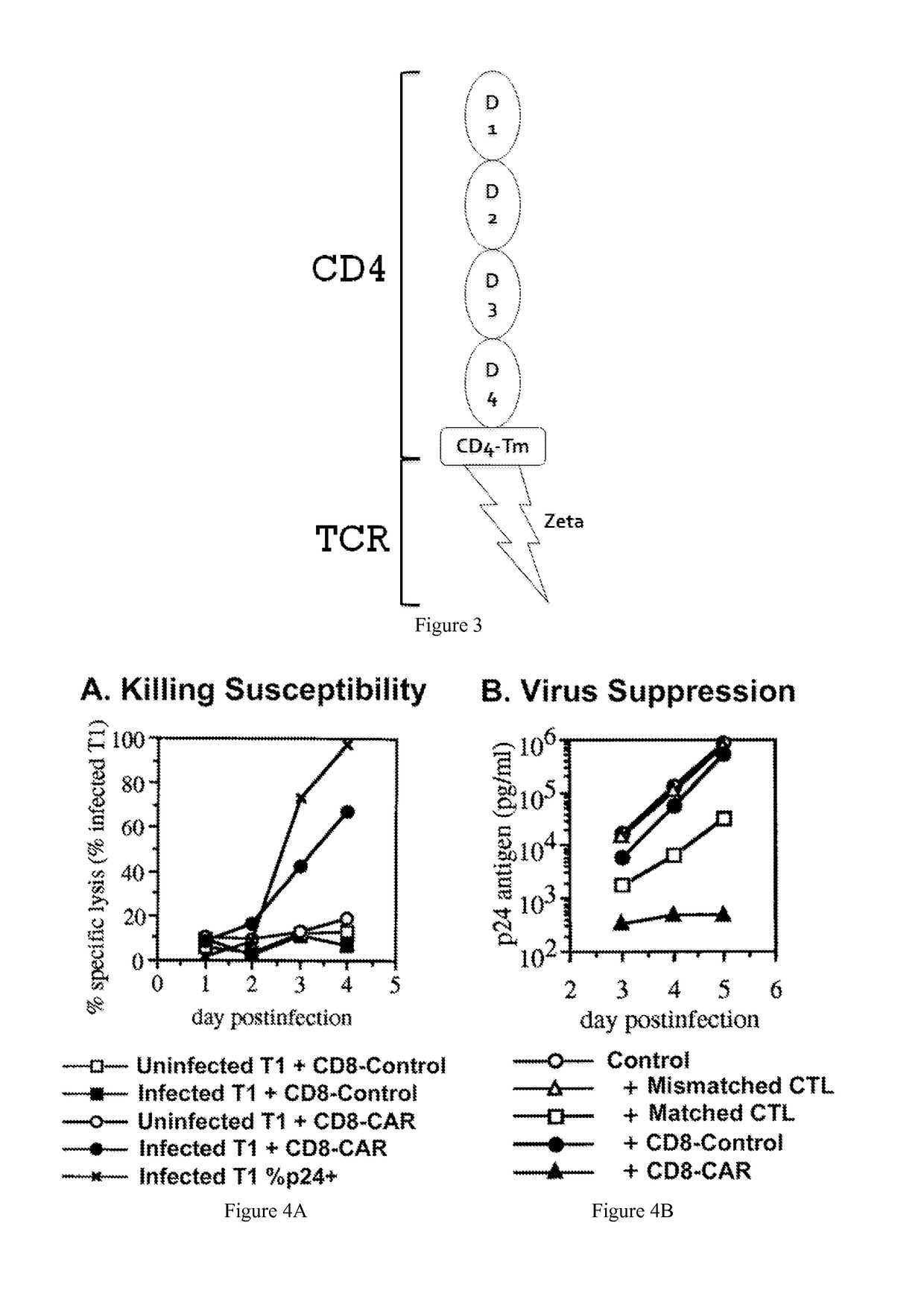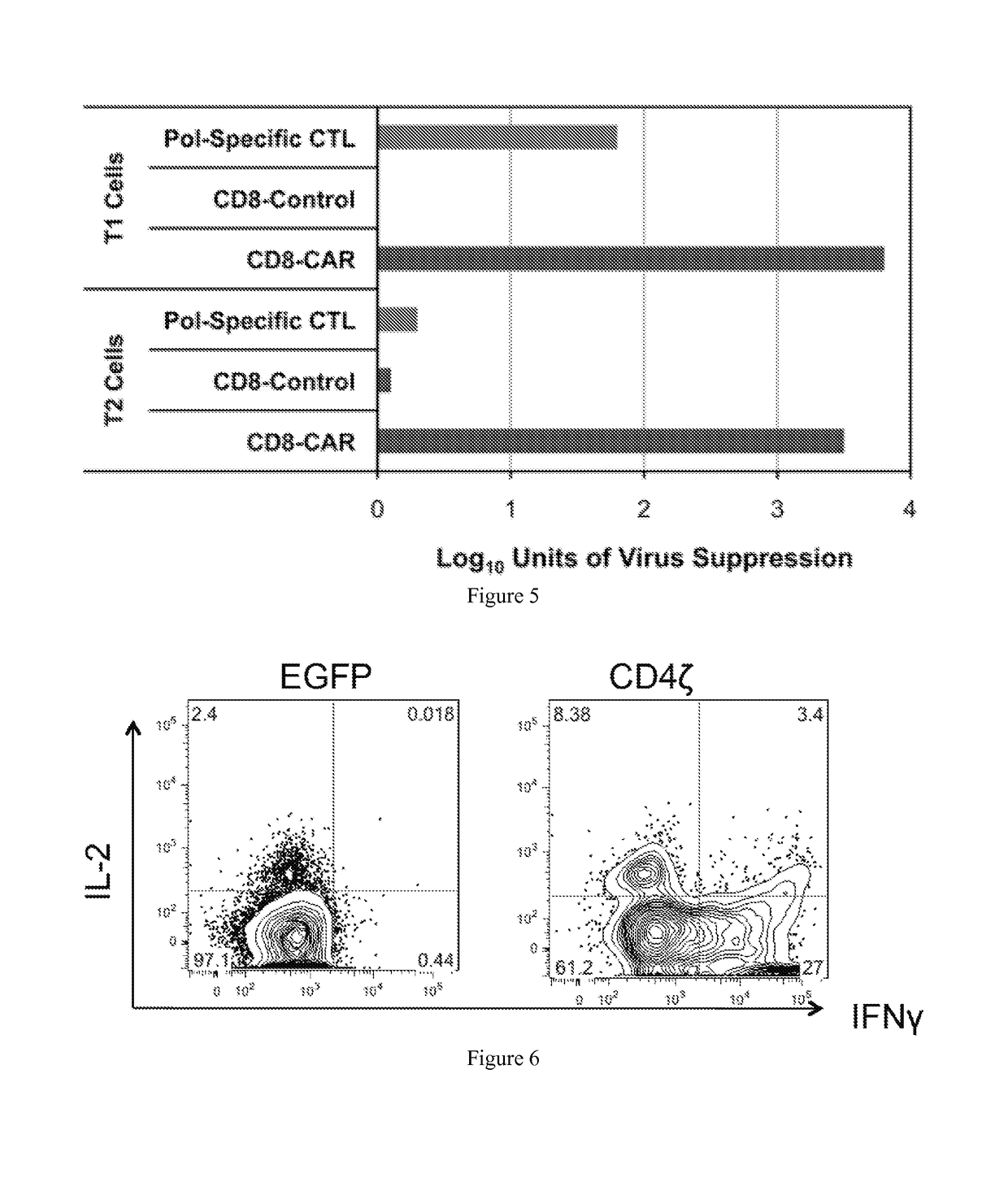Engineering antiviral T cell immunity through stem cells and chimeric antigen receptors
a technology of chimeric antigen receptors and stem cells, which is applied in the field of engineered functional effector cells and recombinant human progenitor cells, can solve the problems of high cost, high cost, and high cost of cd4+ t-cell help, and achieve the effect of reducing the cost of t-cell help and reducing the cost of treatmen
- Summary
- Abstract
- Description
- Claims
- Application Information
AI Technical Summary
Benefits of technology
Problems solved by technology
Method used
Image
Examples
Embodiment Construction
[0042]The present invention provides a method for programming stem cells to provide a self-renewing population of both CD8+ and CD4+ HIV-targeted T-cells that are resistant to direct HIV infection, and which bypass the mechanisms by which HIV usually evades the immune response. The present invention involves the genetic modification of hematopoietic stem cells (HSCs), hematopoietic progenitor cells (HPCs), or hematopoietic stem and progenitor cells (HSPCs) using chimeric antigen receptors (CARs) to form antigen-specific T cells against HIV.
[0043]Modification of human HSCs with a T-cell receptor (TCR) comprising an alpha and beta chain (which bind HIV peptide in the context of an HLA molecule) allows the differentiation of HIV-specific T cells in vivo in humanized mice. See Kitchen et al. (2012) PLoS Pathog. 8(4): e1002649; see also U.S. Ser. No. 13 / 045,073, filed 10 Mar. 2011, both of which are herein incorporated by reference in their entirety. The engineered T cells, however, are ...
PUM
| Property | Measurement | Unit |
|---|---|---|
| nucleic acid | aaaaa | aaaaa |
| cell surface | aaaaa | aaaaa |
| size | aaaaa | aaaaa |
Abstract
Description
Claims
Application Information
 Login to View More
Login to View More - R&D
- Intellectual Property
- Life Sciences
- Materials
- Tech Scout
- Unparalleled Data Quality
- Higher Quality Content
- 60% Fewer Hallucinations
Browse by: Latest US Patents, China's latest patents, Technical Efficacy Thesaurus, Application Domain, Technology Topic, Popular Technical Reports.
© 2025 PatSnap. All rights reserved.Legal|Privacy policy|Modern Slavery Act Transparency Statement|Sitemap|About US| Contact US: help@patsnap.com



